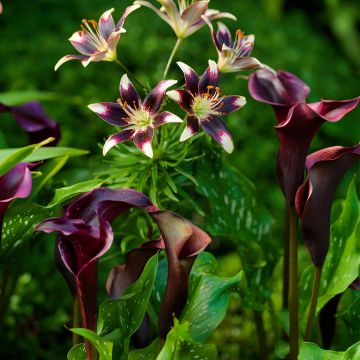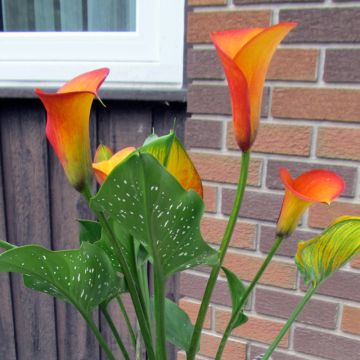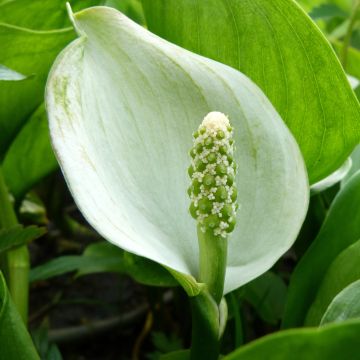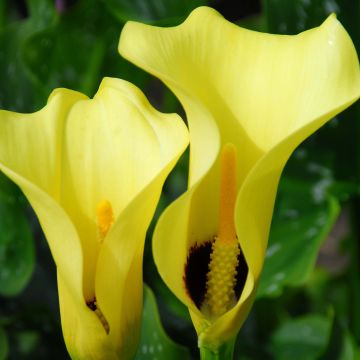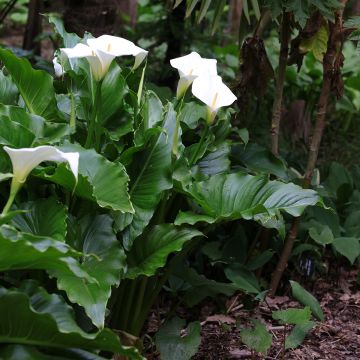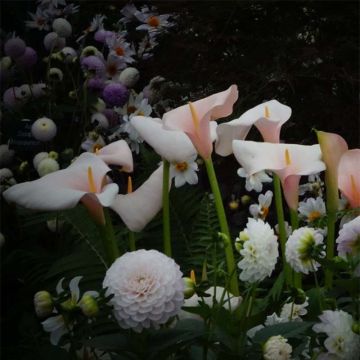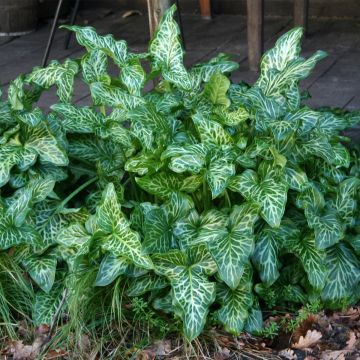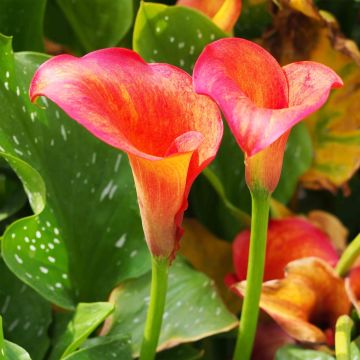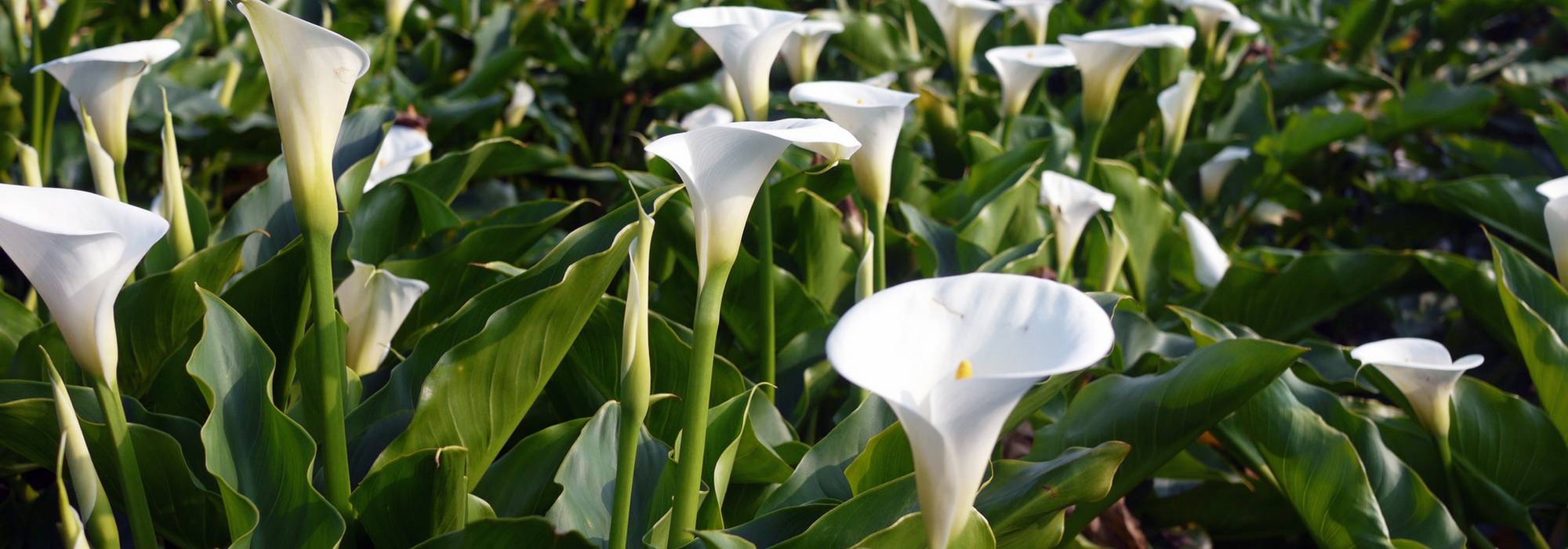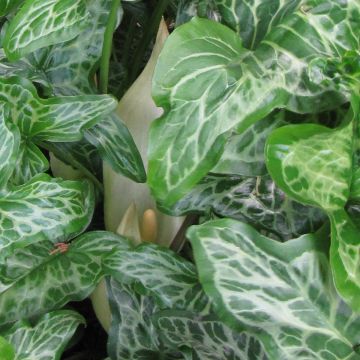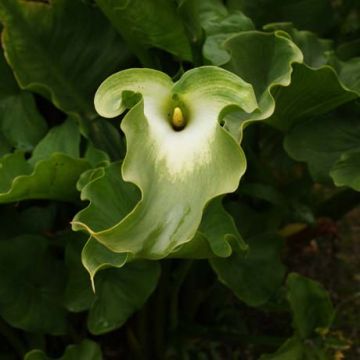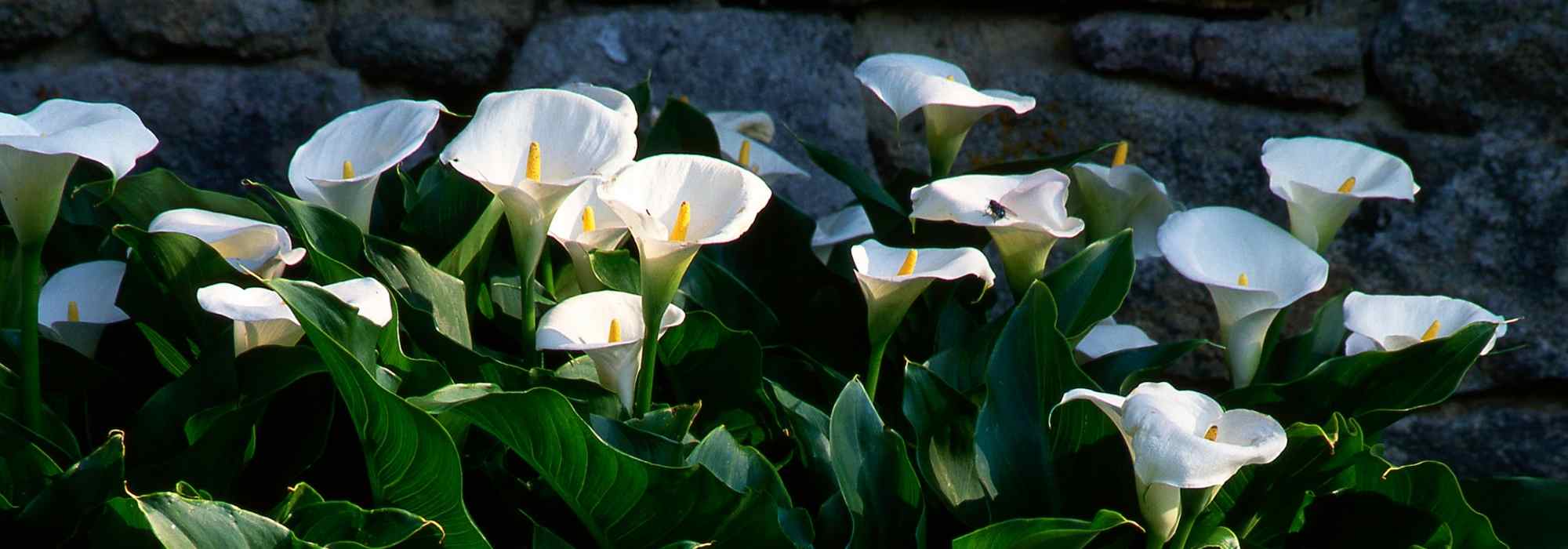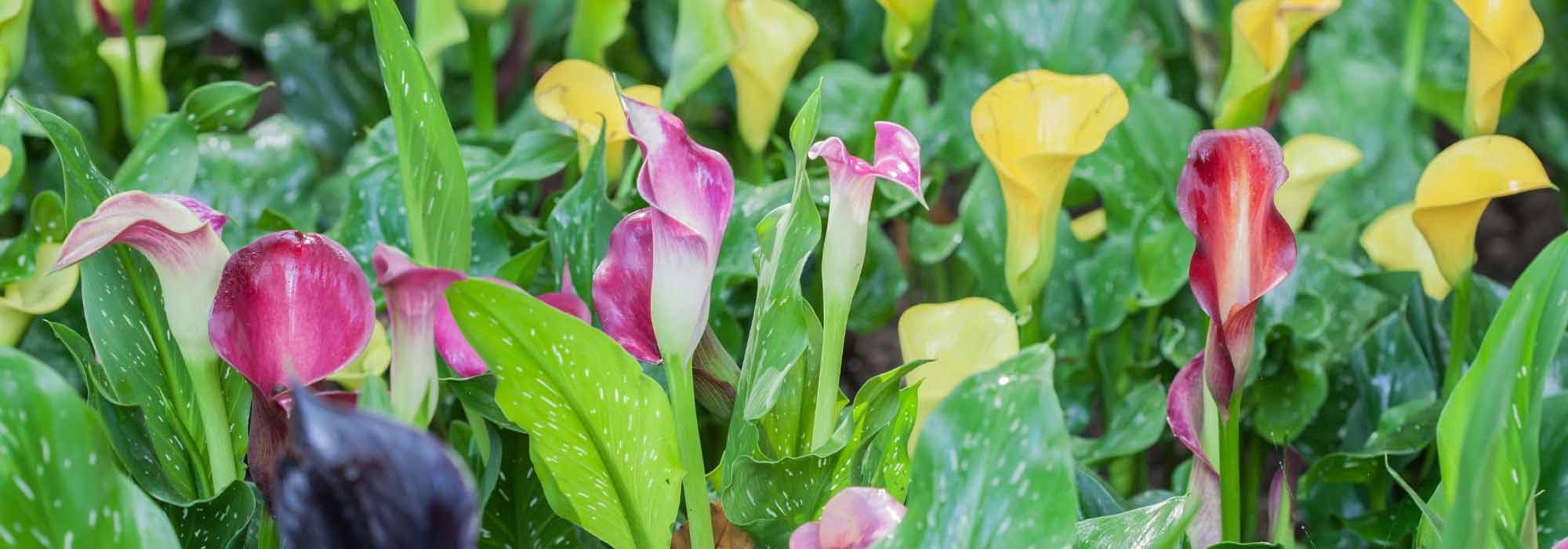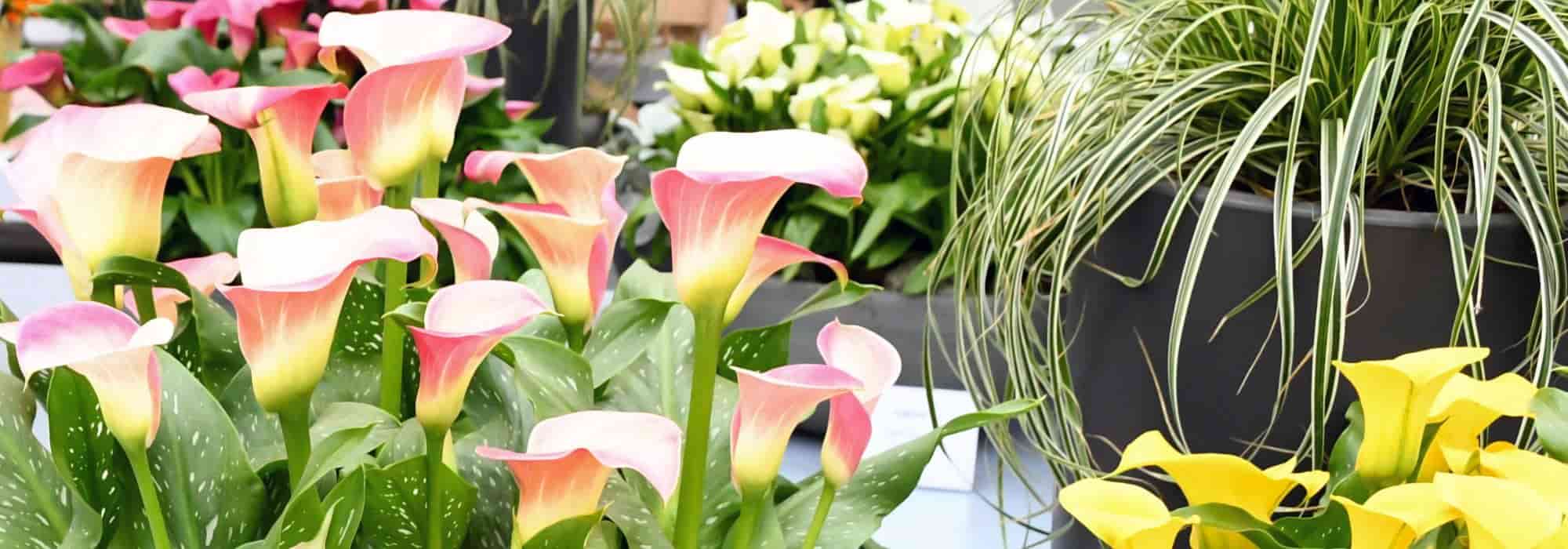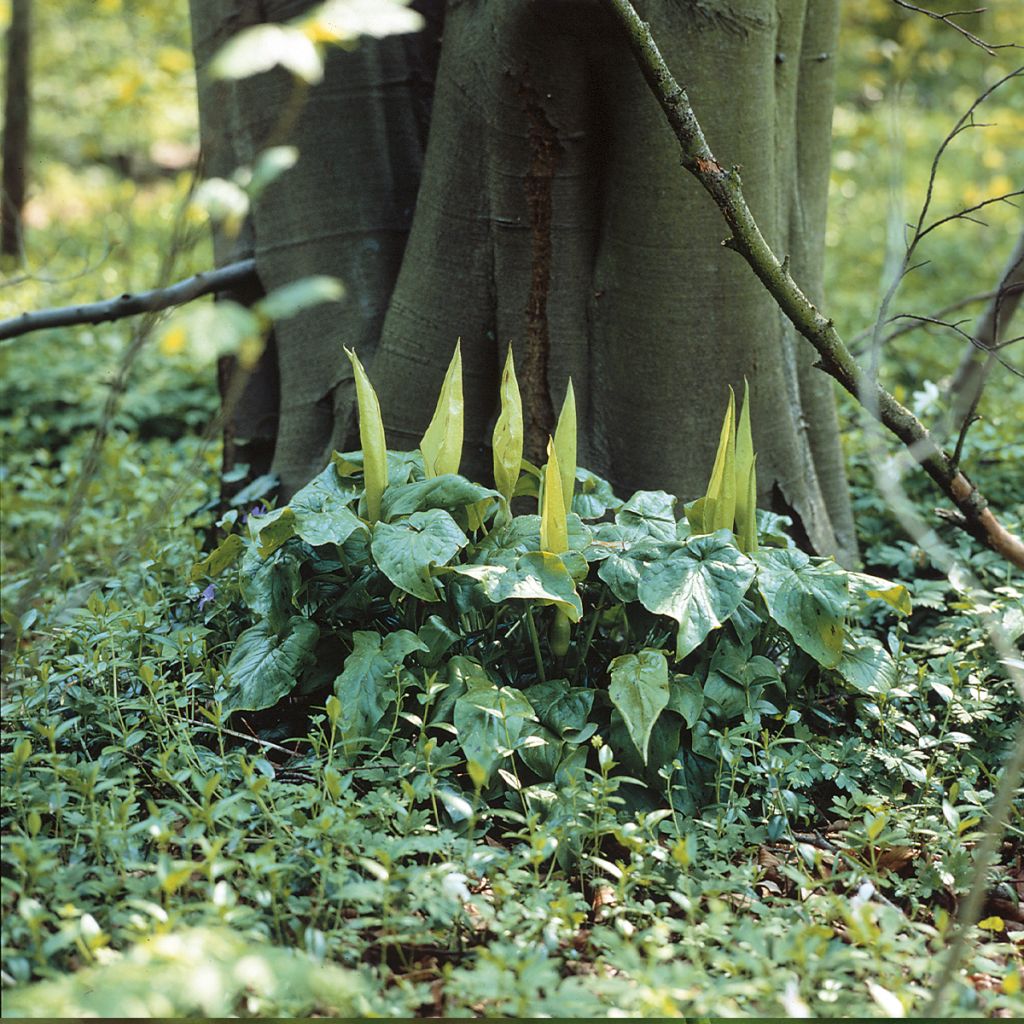

Arum maculatum - Arum ou Gouet tacheté
Arum maculatum - Cuckoo-pint
Arum maculatum
Cuckoo Pint, Lords-and-Ladies, Jack-in-the-Pulpit, Wild Arum
Special offer!
Receive a €20 voucher for any order over €90 (excluding delivery costs, credit notes, and plastic-free options)!
1- Add your favorite plants to your cart.
2- Once you have reached €90, confirm your order (you can even choose the delivery date!).
3- As soon as your order is shipped, you will receive an email containing your voucher code, valid for 3 months (90 days).
Your voucher is unique and can only be used once, for any order with a minimum value of €20, excluding delivery costs.
Can be combined with other current offers, non-divisible and non-refundable.
Why not try an alternative variety in stock?
View all →This plant carries a 6 months recovery warranty
More information
We guarantee the quality of our plants for a full growing cycle, and will replace at our expense any plant that fails to recover under normal climatic and planting conditions.
Would this plant suit my garden?
Set up your Plantfit profile →
Description
Arum maculatum, also known as Arum or Spotted Arum, is a wild plant that can be found in the undergrowth in many regions, but less commonly in the Mediterranean area where it is replaced by its close relative, Arum italicum, or Italian Arum. Its decorative foliage appears early in spring and disappears in the middle of summer. It is often spotted with dark brown. Its flowering, typical of the arum family, takes the form of a greenish spathe with a violet spadix. The fruiting, in late summer, consists of a cluster of bright red berries that are decorative. This unusual perennial, toxic in all its parts, slowly colonizes humus-rich soils that are not too dry at the base of bushes and other small trees.
Arum maculatum is a long-tubered perennial also known as Lords-and-Ladies or Cuckoo-pint. This plant, belonging to the arum family, is native to Europe and the Caucasus. It grows spontaneously in woodland, in humus, on deep soils that are generally clay-limestone, not too dry in summer. This species tolerates competition from other undergrowth plants quite poorly, which sometimes makes its cultivation delicate in gardens. At maturity, the plant will reach an average height of 35cm (14in), spreading thanks to its underground stem. Triangular leaves with a rubbery lamina, bright green and shiny, frequently adorned with dark spots, emerge from its tuber in March. They will wither in July-August. Flowering takes place in May, in the form of a large whitish spathe that conceals a fleshy axis called the spadix, which is light violet in colour. This inflorescence has the peculiarity of emitting heat and diffusing an odour of excrement intended to attract small flies that ensure pollination. The flowering is followed by the formation of round and fleshy fruits, shiny, orange-red, 5 to 7mm in diameter, tightly packed against each other.
A shade-loving perennial that thrives in moist, humus-rich soils, Arum maculatum is interesting for carpeting the base of shrub or tree borders in a garden that embraces nature. It can be associated with ferns, hostas, and bleeding hearts. However, care should be taken not to associate it with overly vigorous plants that could smother it. It will also thrive near a water source, as long as the soil is not waterlogged all year round. It can also be planted en masse along a north-east facing wall if the soil doesn't dry out too much.
Note: all parts of the plant are toxic if ingested due to the crystals of oxalates, saponins, and various alkaloids found in the leaves, fruits, and rhizome. The use in phytotherapy is reserved for professionals.
Plant habit
Flowering
Foliage
Safety measures
Botanical data
Arum
maculatum
Araceae
Cuckoo Pint, Lords-and-Ladies, Jack-in-the-Pulpit, Wild Arum
Western Europe
ingestion
Cette plante est toxique si elle est ingérée volontairement ou involontairement.
Ne la plantez pas là où de jeunes enfants peuvent évoluer, et lavez-vous les mains après l'avoir manipulée.
Pensez à conserver l'étiquette de la plante, à la photographier ou à noter son nom, afin de faciliter le travail des professionnels de santé.
Davantage d'informations sur https://plantes-risque.info
Other Arums
View all →Planting and care
Plant the spotted arum in spring or autumn, in a semi-shaded position, in a fertile, humus-rich soil, even clayey or limestone, remaining slightly moist but well-drained. Long summer droughts and scorching summers are poorly tolerated. Make sure to protect it from other more vigorous undergrowth plants that could smother it.
Planting period
Intended location
Care
Planting & care advice
This item has not been reviewed yet - be the first to leave a review about it.
Haven't found what you were looking for?
Hardiness is the lowest winter temperature a plant can endure without suffering serious damage or even dying. However, hardiness is affected by location (a sheltered area, such as a patio), protection (winter cover) and soil type (hardiness is improved by well-drained soil).

Photo Sharing Terms & Conditions
In order to encourage gardeners to interact and share their experiences, Promesse de fleurs offers various media enabling content to be uploaded onto its Site - in particular via the ‘Photo sharing’ module.
The User agrees to refrain from:
- Posting any content that is illegal, prejudicial, insulting, racist, inciteful to hatred, revisionist, contrary to public decency, that infringes on privacy or on the privacy rights of third parties, in particular the publicity rights of persons and goods, intellectual property rights, or the right to privacy.
- Submitting content on behalf of a third party;
- Impersonate the identity of a third party and/or publish any personal information about a third party;
In general, the User undertakes to refrain from any unethical behaviour.
All Content (in particular text, comments, files, images, photos, videos, creative works, etc.), which may be subject to property or intellectual property rights, image or other private rights, shall remain the property of the User, subject to the limited rights granted by the terms of the licence granted by Promesse de fleurs as stated below. Users are at liberty to publish or not to publish such Content on the Site, notably via the ‘Photo Sharing’ facility, and accept that this Content shall be made public and freely accessible, notably on the Internet.
Users further acknowledge, undertake to have ,and guarantee that they hold all necessary rights and permissions to publish such material on the Site, in particular with regard to the legislation in force pertaining to any privacy, property, intellectual property, image, or contractual rights, or rights of any other nature. By publishing such Content on the Site, Users acknowledge accepting full liability as publishers of the Content within the meaning of the law, and grant Promesse de fleurs, free of charge, an inclusive, worldwide licence for the said Content for the entire duration of its publication, including all reproduction, representation, up/downloading, displaying, performing, transmission, and storage rights.
Users also grant permission for their name to be linked to the Content and accept that this link may not always be made available.
By engaging in posting material, Users consent to their Content becoming automatically accessible on the Internet, in particular on other sites and/or blogs and/or web pages of the Promesse de fleurs site, including in particular social pages and the Promesse de fleurs catalogue.
Users may secure the removal of entrusted content free of charge by issuing a simple request via our contact form.
The flowering period indicated on our website applies to countries and regions located in USDA zone 8 (France, the United Kingdom, Ireland, the Netherlands, etc.)
It will vary according to where you live:
- In zones 9 to 10 (Italy, Spain, Greece, etc.), flowering will occur about 2 to 4 weeks earlier.
- In zones 6 to 7 (Germany, Poland, Slovenia, and lower mountainous regions), flowering will be delayed by 2 to 3 weeks.
- In zone 5 (Central Europe, Scandinavia), blooming will be delayed by 3 to 5 weeks.
In temperate climates, pruning of spring-flowering shrubs (forsythia, spireas, etc.) should be done just after flowering.
Pruning of summer-flowering shrubs (Indian Lilac, Perovskia, etc.) can be done in winter or spring.
In cold regions as well as with frost-sensitive plants, avoid pruning too early when severe frosts may still occur.
The planting period indicated on our website applies to countries and regions located in USDA zone 8 (France, United Kingdom, Ireland, Netherlands).
It will vary according to where you live:
- In Mediterranean zones (Marseille, Madrid, Milan, etc.), autumn and winter are the best planting periods.
- In continental zones (Strasbourg, Munich, Vienna, etc.), delay planting by 2 to 3 weeks in spring and bring it forward by 2 to 4 weeks in autumn.
- In mountainous regions (the Alps, Pyrenees, Carpathians, etc.), it is best to plant in late spring (May-June) or late summer (August-September).
The harvesting period indicated on our website applies to countries and regions in USDA zone 8 (France, England, Ireland, the Netherlands).
In colder areas (Scandinavia, Poland, Austria...) fruit and vegetable harvests are likely to be delayed by 3-4 weeks.
In warmer areas (Italy, Spain, Greece, etc.), harvesting will probably take place earlier, depending on weather conditions.
The sowing periods indicated on our website apply to countries and regions within USDA Zone 8 (France, UK, Ireland, Netherlands).
In colder areas (Scandinavia, Poland, Austria...), delay any outdoor sowing by 3-4 weeks, or sow under glass.
In warmer climes (Italy, Spain, Greece, etc.), bring outdoor sowing forward by a few weeks.






























